Artist Interviews 2024
Helena Klaus 
By Julia Siedenburg

Helena B Klaus truly deserves to be our issue's Cover artist, and she deserves so much more. This fellow German lad, with her exceptional artistic talents, creates the MOST beautiful paintings!
Inspired by the great Austrian painters such as Egon Schiele and Gustav Klimt, she too has mastered how to craft interesting, emotional characters. Something that I find unique about her art is that she uses coffee to stain certain parts and so bring out the intensity of the image.
I fell in love with her work the moment I saw it and I am so beyond happy that I get to share her work and her story with you, dear readers. Please enjoy our interview:
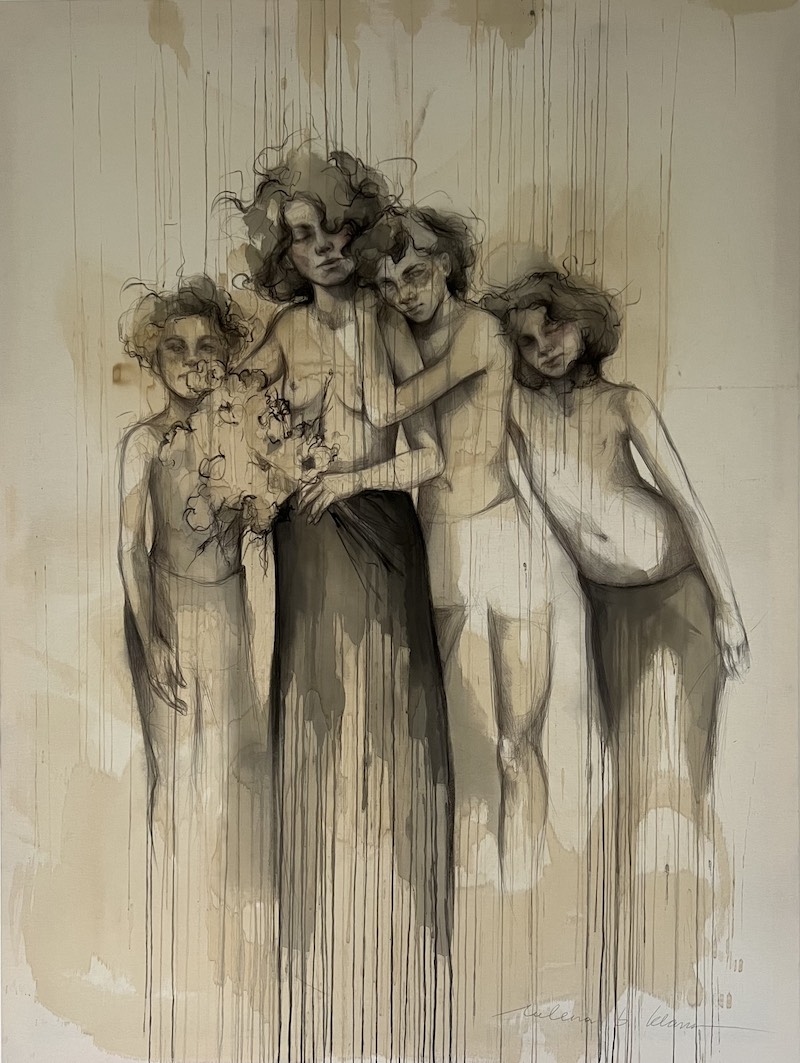
In your opinion, why is the effect that looking at art has on us so powerful?
For one thing, I think that they are unfortunately not powerful enough for everyone. You simply recognize that art is a niche. The good thing is that the people who are interested in art and paintings are often wonderfully subtle people with a clear sense of aesthetics of all kinds.
I think looking at art makes this group of people dream, admire the craft, stir up many emotions, and stimulate them to think, or even be envious of the artist's skill.
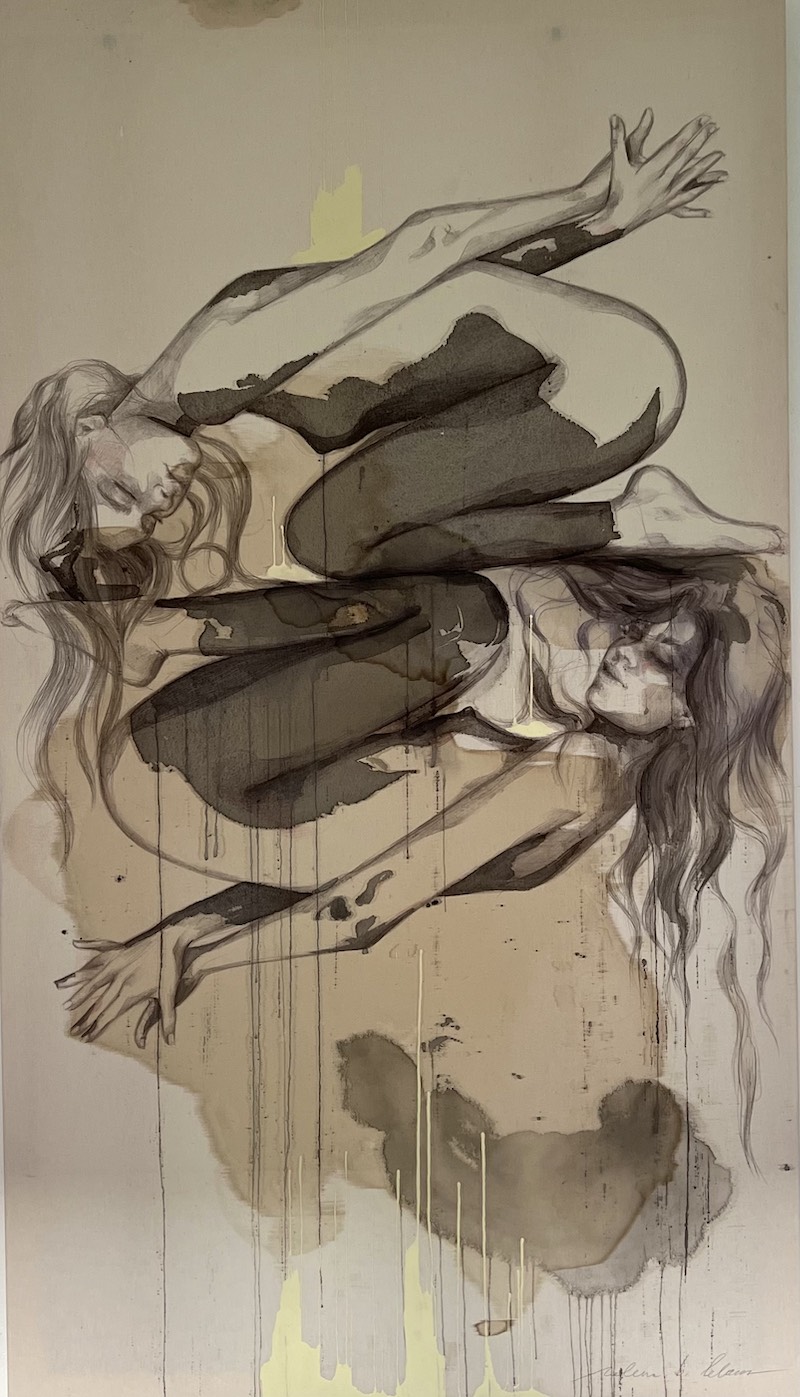
Who are your biggest inspirations?
As a student, I was very enthusiastic about Gustav Klimt and Ferdinand Hodler. I find painters who could depict people in a special way incredibly inspiring. Egon Schiele with his alienation of the body and color. Gottfried Helnwein, especially his earlier works - huge, photorealistic - take the viewer's breath away.
Francois Bard's main motive is people, but he chooses very special people and sections of people to paint. And last but not least, I love the art of Nikoleta Sekulovic. It's probably a typical woman thing, but I find her depiction of women and her motifs soft, melancholy, dreamy, and very special.
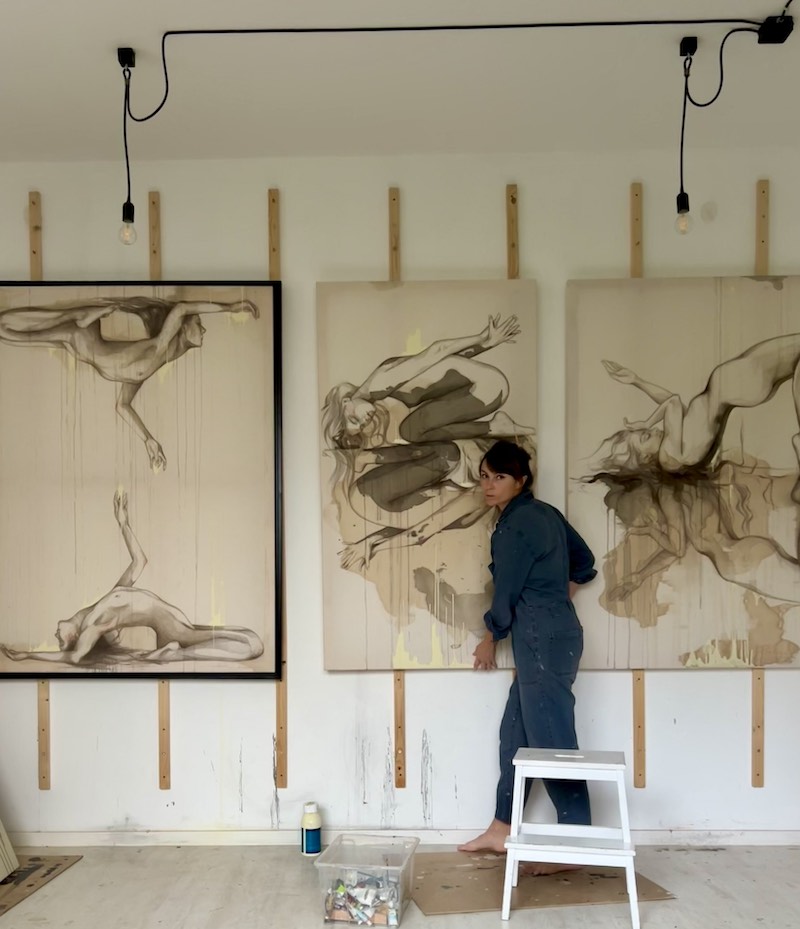
How did you learn to draw the way you do?
So first of all, I learned to draw and paint classically. But because I smudge my drawing a lot when I draw with a pencil - unconsciously - at some point I decided to reach for a ballpoint pen. It's just great to draw with, it doesn't smudge and has great properties - which you can use for drawings, especially well for a clear line for example.
It wasn't until I started drawing a lot that I gradually developed my special artistic skills. They came with experience, which is probably what you call your very own style. First came coffee, then ink, and occasionally acrylic...all by feel and without an exact plan to follow.
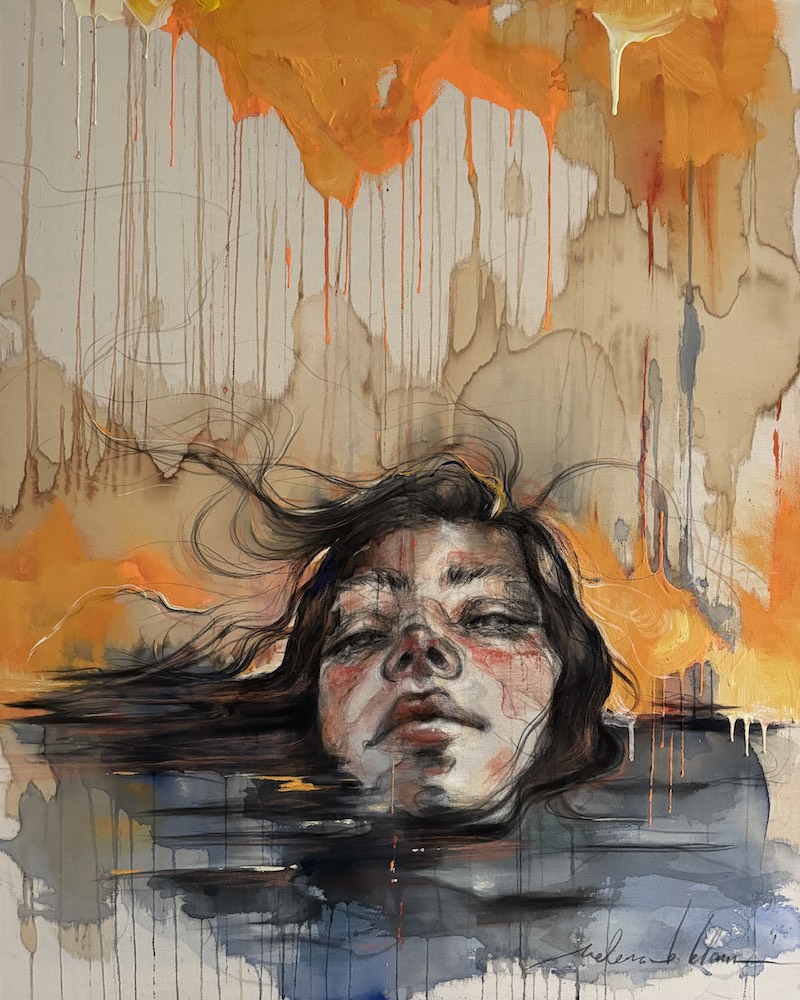
You create the most beautiful and emotionally driven female-focused artworks. Why are you more drawn to the realism genre in combination with women’s figures and forms?
First of all, thank you for the compliment. Basically, I never really thought about my motives or the technique in my paintings. I painted and drew what I thought was aesthetically pleasing for me. Women are beautiful and so versatile beings...I personally find very graceful female bodies, with an almost historical touch, very appealing and beautiful... women in their different roles, with their individual thoughts. And the naked body of a woman is also simply beautiful to me - it has nothing to do with sexuality. It's the enthusiasm for shapes and 'softness' and of course, I feel a certain sense of solidarity.
My technique will certainly change in the future, but for now, it's a preference for the figurative and a relatively realistic style of representation. I like well-abstracted art, but it's not me! I am more realistic, I actually enjoy executing certain elements very precisely and being able to do it, and yes, to show it to everyone as well.
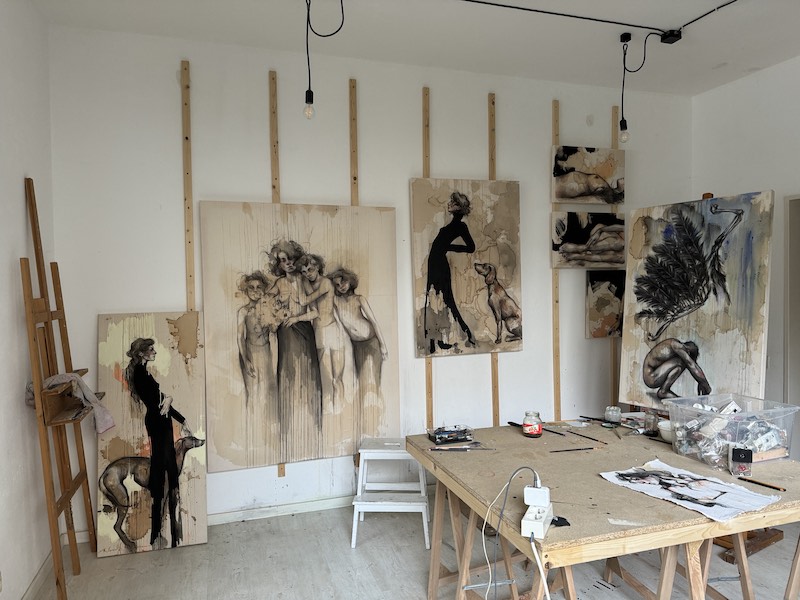
Looking at all these images makes me feel very emotionally involved. Based on their body language and expressions, some seem to be in a melancholic and vulnerable mood, while others seem to have a more mysterious demeanor; almost as if they are trying to hide their past. Where do you get your portrait ideas from? Do you have to be in a certain emotional state to create these kinds of art pieces?
I do have to admit that I primarily paint and enjoy it. I am grateful that I can practice art every day. The mood or the intention in painting is created rather unconsciously. At least it's not the case that I have a plan for the painting from the outset. It somehow emerges on its own.
Of course, once I’ve finalized the rough parts, I play with the intensity of the coffee stain and its multiple layers, for example. This is what creates the mood in the painting.
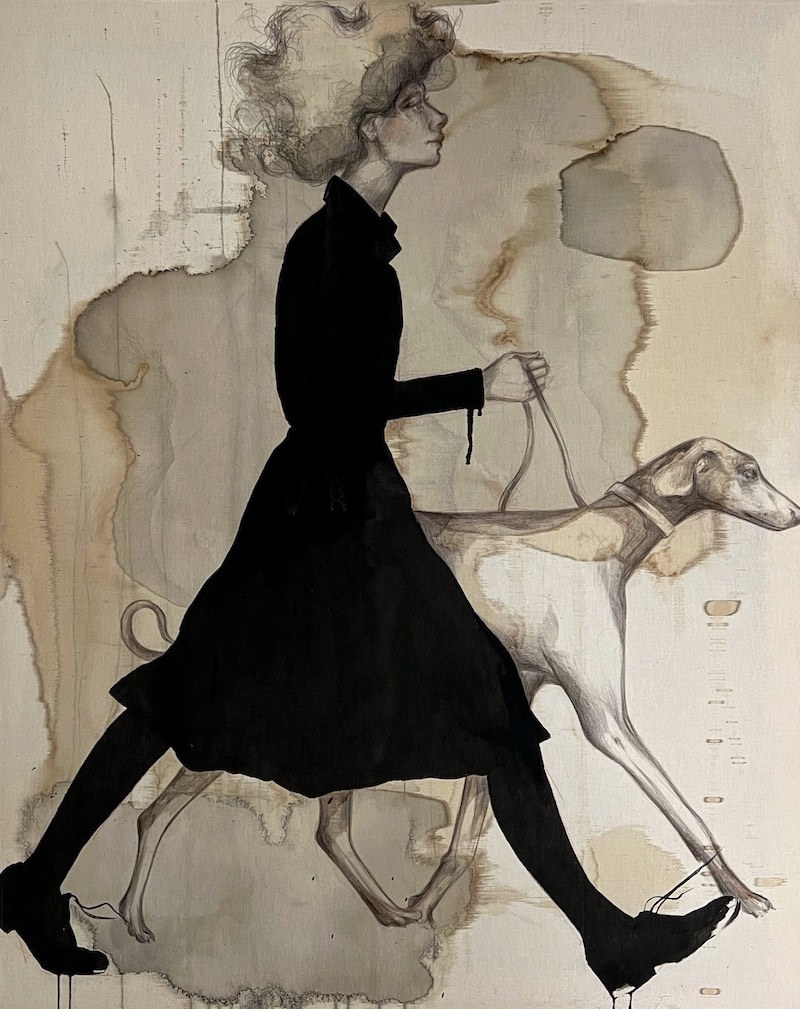
One series of yours that I am specifically fascinated by is the sophisticated women dressed in all black. What would you say is your favorite image or series?
I do really like the series - Women in Black - and somehow everyone else likes it too, haha. I don't even know why that is. The black is very present, almost like a silhouette, in a painting. I think the black in combination with the coffee creates a certain melancholic vintage mood in the painting.
I definitely like painting this series because sometimes it's like a challenge for me. The recurring element - the black silhouette - and what else? What can you create from it? And then somehow interesting paintings emerge from a half-finished idea.
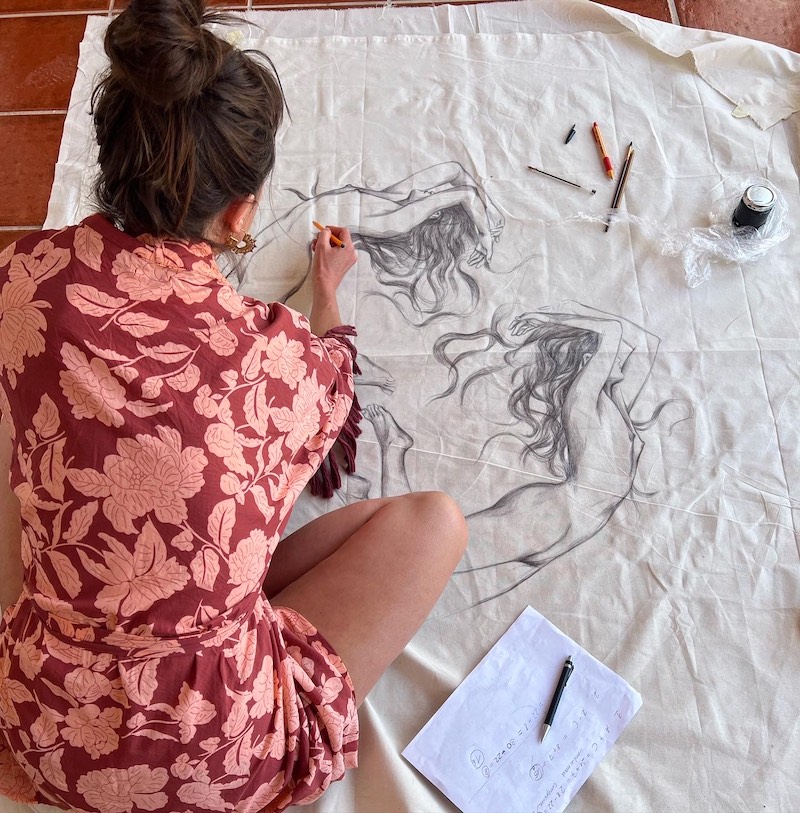
While some of your works show more muted colors, others burst with color. What aspects determine whether your painting is going to be extremely vivid or gloomier?
The aspects that determine this are more my moods or inner feelings. I'm an emotional person - there's sometimes a fine line between being extremely angry and extremely happy... I think it's the same in my art. For the first time champ, I really feel like freaking out artistically! At the moment it's color aspects like orange or red. Surprisingly, I hardly ever use balanced and neutral colors like green or blue. funny enough, I've never noticed this before, until now.
Then there are times when I enjoy the tranquility in pictures. I then draw my large canvases with black biros and find the effect of these paintings simply soothing.
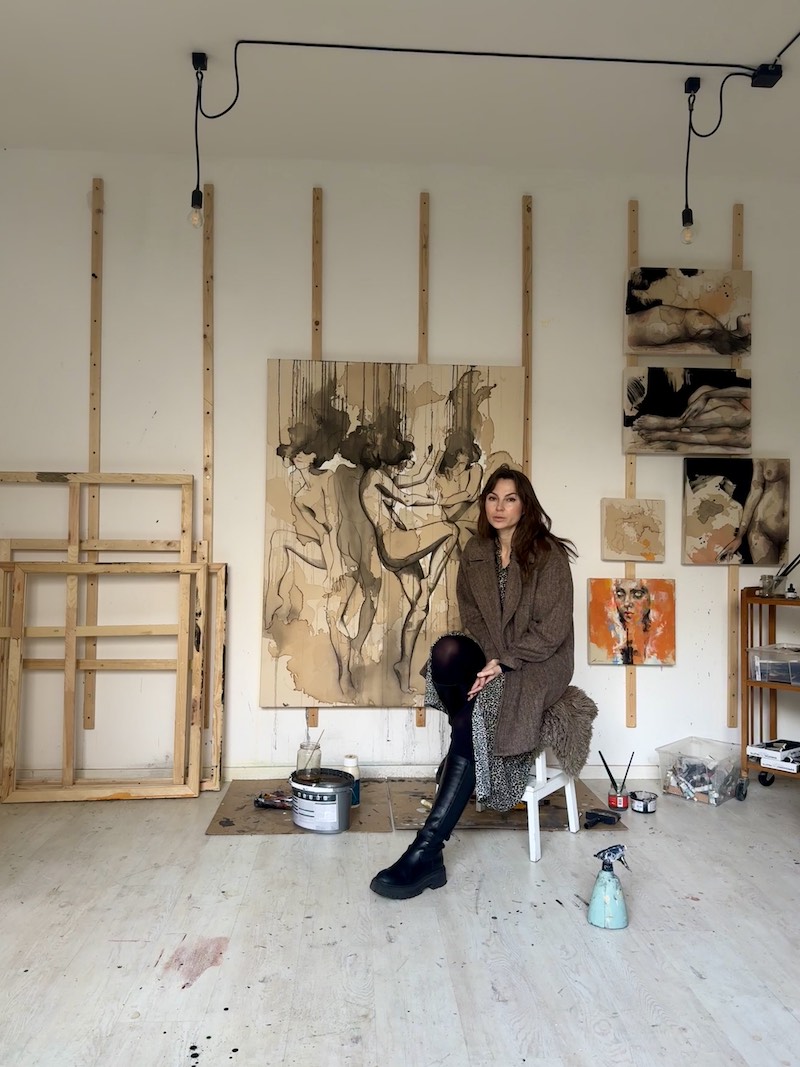
Please tell us a bit about your childhood and upbringing. Was art always very present in your life?
I'm originally from Ukraine, but I have German roots through my grandparents. I had a very happy childhood. I didn't know my father. I am an only child of a single mother. My grandmother was very gentle, my mother was strict, but not unkind. We moved to Berlin when I was 11. But art has always been present - my favorite pastime as a child was going to the art gallery with my mother or walking along Pushkin's Boulevard - where freelance artists of the 90s sold their art directly on the street. It was very exciting for me. The 90s were a difficult and dangerous time for all the countries of the former Soviet Union.
Basically, I've always loved art, though it never occurred to me that I could do it for a living. You just learn stable things - everyone in our family (in a distant sense) studied - my mother is an airplane engineer, aunts, and uncles - are mathematicians/computer scientists, grandma - is a pharmacist, etc. It was only when I was studying history at university that I realized that there was a faculty of art. I almost didn't dare to study art, no one in our family had ever done it... do you actually earn any money with it later? I did end up studying it. It was the best decision and a very conscious decision in my life. So good that I made this decision. I am very happy that I went on this path.
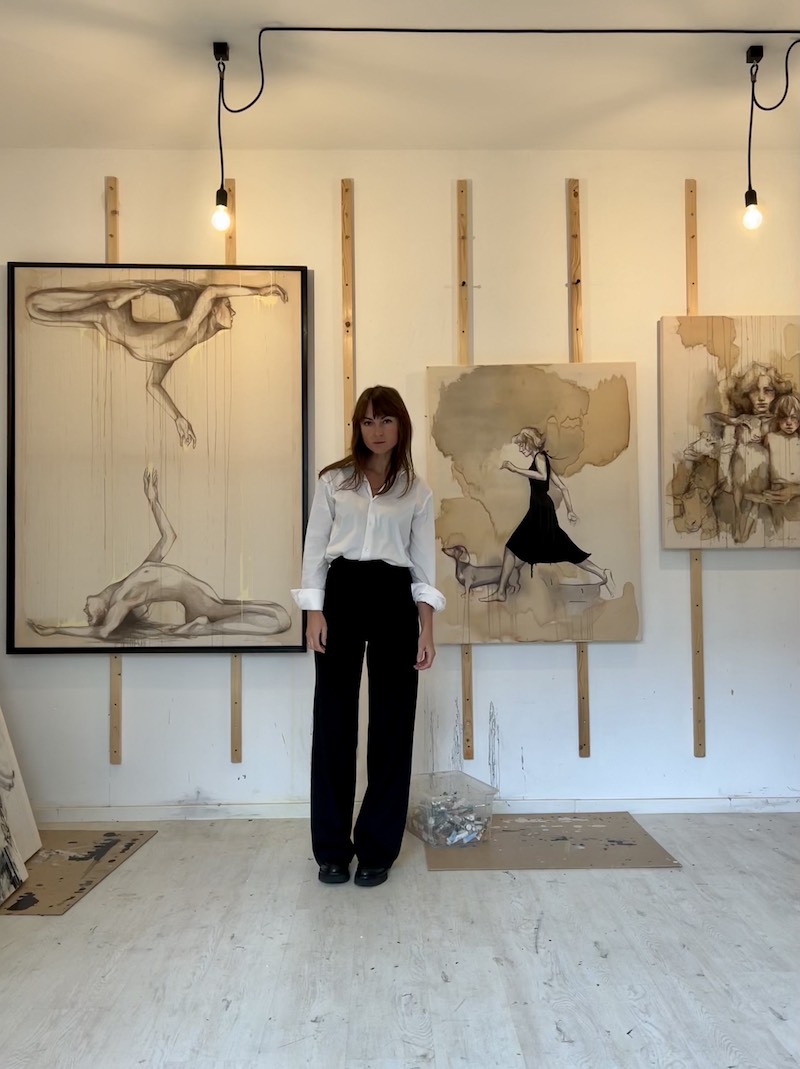
In addition to being an artist, you are also a mother, and you travel a lot. How would you say these experiences influence your work?
I've never been one of those people who gives up everything to be an artist. I wanted everything and I wanted to be an artist, haha. You can want it all!! Why not?! I always wanted a big family in a conservative sense - I'm an only child without a father. I wanted to do it differently. I always wanted to see the world and I'm doing that! Art comes with me on my travels! Drawing and painting supplies travel with us around the world. I paint any small moment I have - that's how you get a lot done. This is my approach, it may not apply to everyone, but it works well for me.
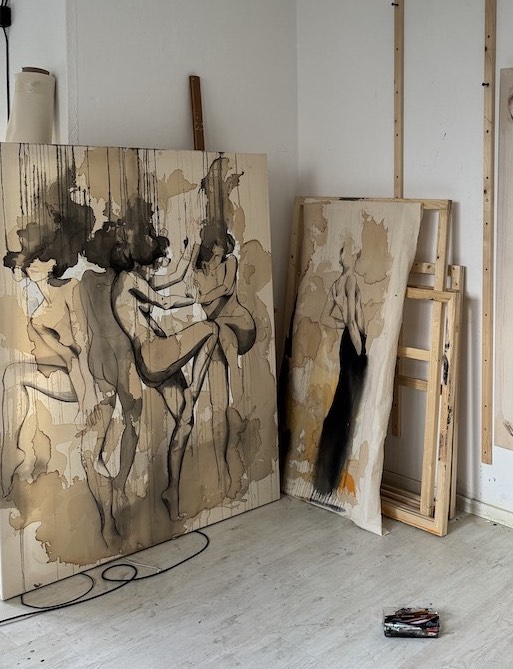
What are your hopes for the future? Anything specific that you are planning on doing with your work?
I would like to become more internationally known in the future. At the moment, I'm very Europe-centric. Like every artist, I wish for beautiful exhibitions and continued happiness with the people close to me. And I'm very happy about this interview, I think I very consciously thought about my work as an artist today. Thank you for this.
|
|

